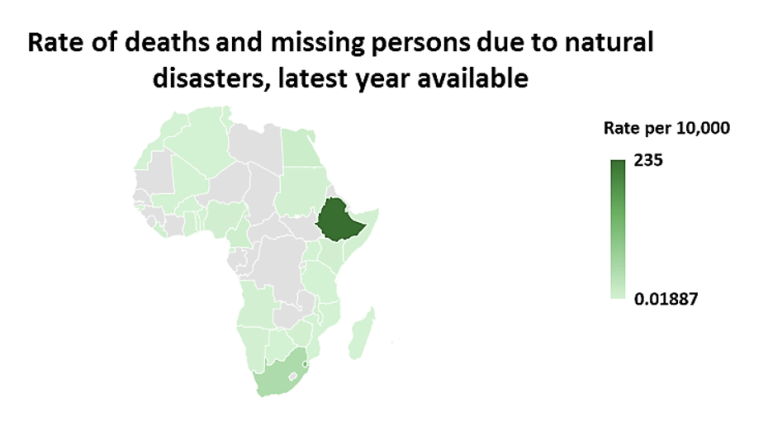“Climate Action” in Africa
 Adam MacRae
Adam MacRae  July 4, 2023
July 4, 2023  Adam MacRae
Adam MacRae  July 4, 2023
July 4, 2023 In our first Global Goals briefing covering No Poverty in Africa, we focused on the ambition of eradicating extreme poverty on the continent. As it happened, when we first published the piece, we highlighted how the war in Ukraine would impact directly impact Africa due to rocketing food prices; just as the Economist did.
This time, the Economist set the agenda first highlighting the distressing potential trade-offs in the world of international development and combating climate change. For this month’s briefing, we are focusing on “Climate Action” in Africa with a target of strengthening resilience and adaptive capacities to climate-related disasters measured by the number of people directly affected by disasters.
Between 2010 through 2019, more than 1.3 billion people were seriously impacted by extreme weather requiring some form emergency assistance. When looking at those who have not necessarily been impacted but are vulnerable to the risks of climate change, that number jumps to 3.5 billion people. Of those 3.5 billion, a disproportionate share are found in Africa has 7 of the 10 most vulnerable countries are located in the continent.
We ended up in a reality where nearly half of humanity is highly vulnerable to climate change because of human emissions increasing global temperatures by 1.1ºC above pre-industrial levels.
Despite being the most affected, Africa is only responsible for 2.8% of global emissions. If that were not cruel enough, the continent’s population will swell up from 1.2 billion today to 4.2 billion by the end of the century yet it only receives 3% of global climate finance.
This is not only unsustainable, but also morally unacceptable.
When diving into the raw data of those directly impacted by climate change related disasters, two things stand out. First, of the data reported, the rate of those directly impacted has been steadily increasing from 3.09 to 13.43 for every 10,000 people between 2007-2021. Second, the quality of the data needs to improve as many countries have not been reporting consistently. In fact, 22 countries home to more than 260 million people have not reported at all.
In order to combat the scourge of climate related disasters, we first have to understand the true scale of it. Only then can policymakers and industry know how to take informed actions to support and address these rising rates.

The reason why Africa is so vulnerable to the impacts of climate change is due to a combination of two factors. First, Africa’s economies are some of the least developed in the world accounting for two thirds of the 700 million people living on less than US $1.9 per day. This economic underdevelopment leaves people even more vulnerable to climate change due to the lack of goods and services required to survive external shocks.
Second, Africa’s GDP is disproportionally tied to the agricultural sector which is sensitive to changing weather patterns. For example, Sub-Saharan Africa accounts for 95% of global rain-fed agriculture. In the years ahead as more and more people are displaced internally, it will be important to see how cities adapt to farmers migrating in hopes of searching for more stable living and working conditions.
Because the effects of climate change are many, so too must the solutions be. The IMF has been investigating the matter with a specific emphasis on Africa and came up with 3 major policy priorities.
On a global level, it is estimated that $3.8 trillion will be required each year to meet our collective climate goals. On an African level, it will require investments of over $3 trillion by 2030, with a further $50 billion invested a year by 2050 just for adaptive measures.
At Holocene, our work focuses on addressing these policy concerns while working with the world of private capital to help fund them. Currently, we are engaged on multiple renewable energy projects across the continent with hopes of serving the almost 600 million people who currently live without access to energy. Furthermore, we are also supporting a new entrant into the telecoms market in the continent.
If you would like to learn more about the work we are championing at Holocene or find out how we can support your projects, get in touch by emailing us as info@holoceneic.com